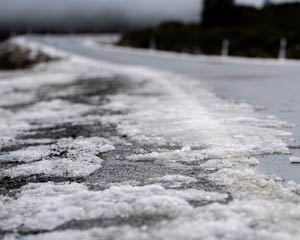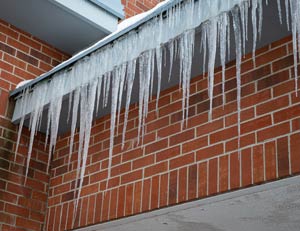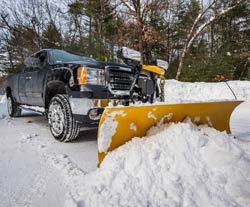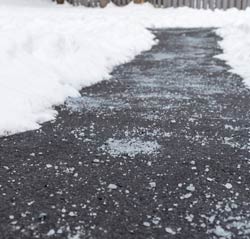
Try These Tips from Members for Seasonal Preparedness
The Farmer’s Almanac predicts a snowy winter. But how snowy? Starting when? And for how long? These are the kind of questions you wish you had the answers to — long before the first snowflake lands. Seasonal prep for facilities, equipment and staff is an annual responsibility and here are some tips from PDRMA member agencies on what works best for them.
 At Gurnee Park District, Christopher Marzano, CPRP, Risk Manager, uses a year-round preventive maintenance calendar with the steps staff needs to take to prepare for the different seasons throughout the year. “Subscribe to a reliable weather service to help predict staffing needs,” he adds, “and help make programming decisions like will we need more staff for plowing, will it be safe to hold this event?” At Gurnee Park District, Christopher Marzano, CPRP, Risk Manager, uses a year-round preventive maintenance calendar with the steps staff needs to take to prepare for the different seasons throughout the year. “Subscribe to a reliable weather service to help predict staffing needs,” he adds, “and help make programming decisions like will we need more staff for plowing, will it be safe to hold this event?”
Throughout the year, Marzano checks the agency’s parking lots, trails and sidewalks to make sure all potholes are filled prior to and throughout winter to ensure minimal water collection and reduce ice buildup. “All our HVAC systems also get preventive maintenance before the winter season to ensure functionality and system performance. And we winterize any equipment/vehicles stored in nonheated garages prior to their long-term storage.”
Follow the Timeline
“We start our preparations in early October with winterizing the outdoor aquatic center and splash pad, the irrigation system at outdoor sports fields, servicing the winter snow removal equipment, taking delivery of bulk salt and reducing the number of park amenities (picnic tables and garbage cans) available during the winter months.”
In November, Marzano puts out markers to identify corners and curves in parking lots and trails for snow removal. Staff also sets up hockey and outdoor recreation ice rinks. Lastly, they winterize nonheated restroom facilities at the end of their fall athletic seasons.
Preparing Staff
“We also ensure staff has proper personal protective equipment for the upcoming season — ice cleats, proper jackets/gloves, hats and eye protection,” Marzano explains, “and we conduct PDRMA’s Safe Winter Walking training, review CORE 6 for winter months and ensure vehicle tires have adequate tread for winter conditions.”
Prepping Facilities
 Marzano ensures all facility downspouts and sump pumps are draining to designated areas and not onto or near walking surfaces and adds the following to his checklist: Marzano ensures all facility downspouts and sump pumps are draining to designated areas and not onto or near walking surfaces and adds the following to his checklist:
- Ensure all roofing drain systems are clear of debris to prevent ice buildup and damming on roofs.
- Ensure all heating elements within mechanical rooms are operating properly to prevent frozen pipes.
- Check stock of snow removal equipment — shovels, salt spreaders and bagged salt — to be sure there are enough supplies prior to the first winter event and before any price increases due to demand occur.
Before Winter Arrives
The winter season means holiday fairs, sledding and cross-country skiing — and risk management for winter sports. In addition to the usual risk management best practices, Marzano’s to-do list includes:
- Ensure all safety measures for outdoor winter activities are in place prior to the first winter event, including sled hill and ice rink rules signage and snow fencing on sled hills and any other appropriate areas.
- Coordinate with local municipalities in case of snow removal equipment failure, so they can help in the agency’s time of need.
Marzano notes that budgeting time is an important aspect of winter prep. “The most time-consuming tasks are winterizing unused facilities, ensuring floor mats and dry mopping are in place and being performed to prevent slips, trips and falls after patrons track in snow to facilities. Snow removal on trails and sidewalks within our parks also takes time due to the specialized equipment needed.”
Oak Lawn Park District
 Ryan Gory, CPRP, CPSI, Superintendent of Parks and Planning for Oak Lawn Park District says, “One of the hardest things about winter weather is its unpredictability. Some winters have measurable snow every three-to-five days; others have only three-to-five total events all season. Regardless, we need to be prepared to respond to the weather we receive. Making the ‘right call’ can be a balancing act between managing resources and responding appropriately — especially when the actual conditions vary from the forecast.” Ryan Gory, CPRP, CPSI, Superintendent of Parks and Planning for Oak Lawn Park District says, “One of the hardest things about winter weather is its unpredictability. Some winters have measurable snow every three-to-five days; others have only three-to-five total events all season. Regardless, we need to be prepared to respond to the weather we receive. Making the ‘right call’ can be a balancing act between managing resources and responding appropriately — especially when the actual conditions vary from the forecast.”
“The work we complete in warmer months to address uneven sidewalks, failing asphalt and gutter downspouts can pay back major dividends in the colder months,” Gory observes. “We typically have a focused effort beginning Oct. 1. We blow down and close our outdoor pools, splash pads and bathroom facilities, stockpile ice melt and begin servicing/preparing vehicles and snow equipment.”
Gory also notes some of the challenges specific to winter:
- Snow removal — Besides sending staff to PDRMA’s snowplow driver trainings, his team meets to discuss the storm game plan based on forecasts and reviews roles and wargame “what if” scenarios.
 Gory points out that snow plowing can be extremely dangerous. He recommends simple adjustments like turning parking lot lights on earlier and adjusting the mechanics of plowing. Is there an opportunity to turn around instead of backing up? Can we plow in a different direction to avoid backing into a busy street/intersection/crosswalk? Is there a better place to put the snow that helps eliminate ice buildup or sight-line issues? These are all questions Gory and his team review after a plowing event to gauge how things went. Gory points out that snow plowing can be extremely dangerous. He recommends simple adjustments like turning parking lot lights on earlier and adjusting the mechanics of plowing. Is there an opportunity to turn around instead of backing up? Can we plow in a different direction to avoid backing into a busy street/intersection/crosswalk? Is there a better place to put the snow that helps eliminate ice buildup or sight-line issues? These are all questions Gory and his team review after a plowing event to gauge how things went.
- Slips trips and falls — Gory’s staff gets slip-on ice cleats for work boots and a review of PDRMA’s 3 Points of Contact as well as ideal locations to get in and out of vehicles. They also monitor the effectiveness of ice melt on parking lots and sidewalks, so they can reapply/spot treat as needed.
- Securing unused facilities — The team turns off and drains water to facilities where it is practical to do so. They also install covers over fresh-air louvers, store or secure loose ancillary equipment (lifeguard chairs, benches, etc.) and check the operation of heating equipment. Gory notes it’s important to maintain clear walkways and access to equipment even if a facility sits idle for several months.
- Frozen pipes — Gory employs multiple safeguards. The agency has Wi-Fi thermostats in all buildings not regularly staffed, so the team can see real-time indoor temperatures. The thermostats also email alerts if the indoor temperature dips below a set point. In addition, staff enters these facilities once or twice a week to evaluate the building envelope and confirm there are no issues inside. Their security alarm vendor installed several water monitors in irrigation and plumbing rooms, which can detect the presence of water on the floor 24/7.
- Other issues — It’s critical for Gory and his team that vehicle lighting is 100 percent during the winter months. It’s often dark when the team arrives to begin clearing areas and nearly dark when they leave. Together, they try to eliminate as many risks as possible, especially when it comes to lifting (snow, snow blowers, etc.). They review the best practices sheet the agency developed with PDRMA that demonstrates the correct way to lift, move and participate in winter activities.
Experience has shown Gory that the smaller things can carry the biggest impact. “Most staff will notice a window broken or a large hole in a roof, but what about the corner fascia that has peeled back and is now letting cold air infiltrate the building? Or the vestibule heater that isn’t 100-percent necessary — until we experience extremely cold temperatures from a polar vortex? Sometimes focusing on those little things can help prevent a big, future loss.“
PDRMA Resources
“PDRMA has plenty of resources available to members,” adds Gory. “You just need to remember to use them. A simple search for ‘winter’ on their website delivers a host of options to review with staff when winter prep starts or even to fill time on a bad weather day. |